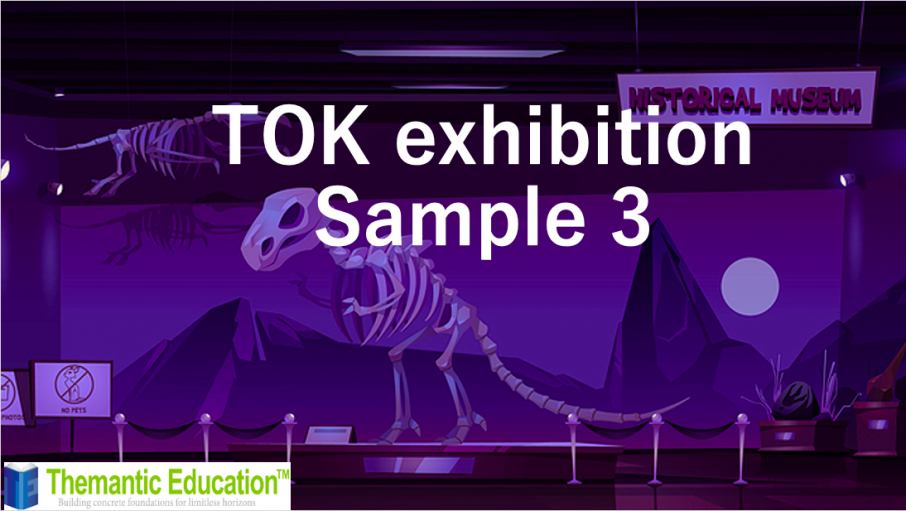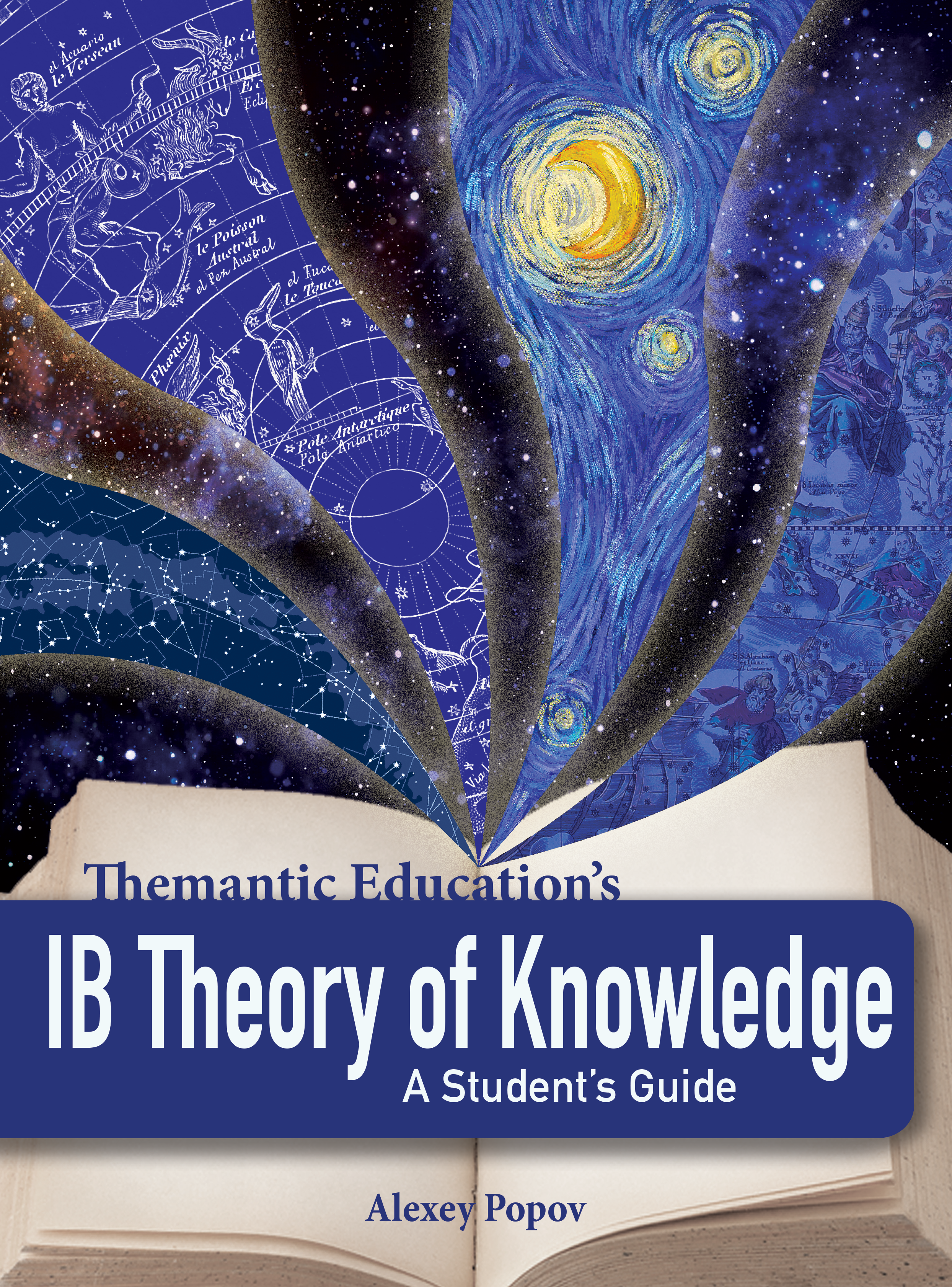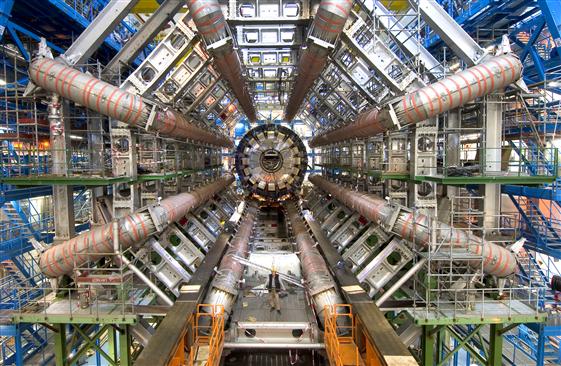This is our THIRD TOK exhibition sample: the written commentary itself as well as a video that gives a step-by-step explanation of the full creation process.
TOK exhibition Sample 3 uses the following approach:
- Start with a particular topic or concept
- Find an interesting object related to this topic or concept
- Find a suitable prompt
- Find the other two objects to “develop the message”
The IA prompt that was selected here is “How important are material tools in the production or acquisition of knowledge?”. The three objects are:
- Screenshot from Botpoet.com (a Turing test for IA-generated poetry)
- The Large Hadron Collider
- The article “Nasal distortion in short-distance photographs” from the online journal JAMA Facial Plastic Surgery
Why we are doing this
We at Themantic Education think that the best way to support students in making their TOK exhibition is to demonstrate some specific examples – not only the final product, but the full thinking process that went into it. This way students will understand not only where they need to go, but also how to get there.
For this reason we have created several sample TOK exhibitions each using a slightly different approach to selecting the objects.
Each of our sample exhibitions includes the fully written TOK exhibition commentary and a YouTube video that gives a step-by-step explanation of how the exhibition was created. Together they will help your students understand the process thoroughly.
Don’t forget to check out our other TOK exhibition samples! See Thematic Education’s IB TOK playlist on YouTube
(And buy our textbook, it’s awesome and different from all other textbooks)
EXPLAINER VIDEO:
The process of creation
WRITTEN COMMENTARY:
How important are material tools in the production or acquisition of knowledge?
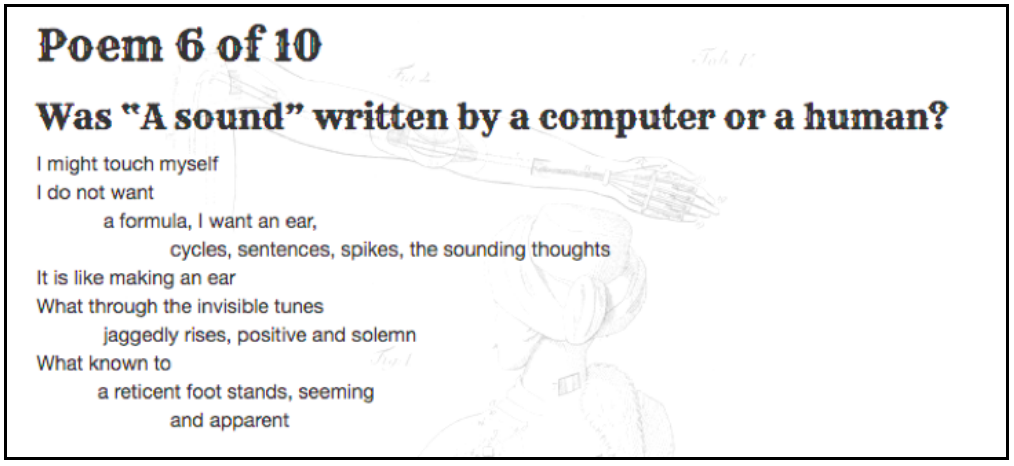 Object 1. Screenshot from Botpoet.com |
My first object is a screenshot from the website botpoet.com – it’s a website dedicated to the competition called “Bot or Not?”. This unusual competition is between humans and machines in writing poetry. Essentially it is a Turing test. Users are asked to read 10 poems and guess if they were written by a human or a machine. If they can’t, we assume that machines have passed the test by producing poetry that is indistinguishable from human creation. This particular poem was written by a computer algorithm, but I mistakenly thought that it was written by a human. The poem looked “human” to me, so the machine managed to fool me.
Poetry is a special kind of non-propositional knowledge that serves as a map to the world of our own experiences. Artificial intelligence is a material tool that we have created to perform certain tasks. But artificial intelligence has evolved to the point where it can be a creator itself. Therefore the object links to the prompt because it is a case of a material tool (artificial intelligence) involved in the production of knowledge (poetry). Moreover, it is a case where the material tool actually produces knowledge all by itself, with no involvement of the original creator.
I have included this object in the exhibition because poetry is one form of knowledge that is often argued to be inherently human. It is commonly believed that the only tool involved in the production of poetry is the human soul. If a machine can produce knowledge that is “inherently human”, then of course material tools are very important in the production of knowledge. In fact, they are so important that they are taking over the human territory, replacing their original creators.
Object 2.The Large Hadron Collider |
My second object is the Large Hadron Collider (LHC). The LHC is the largest particle accelerator in the world, and it is also the largest machine in the world. It took 10 years to build and more than 100 countries collaborated. It lies in a tunnel 27 kilometers in circumference, 175 meters beneath the ground near Geneva. Its purpose is to accelerate particles and make them collide at a very high speed, so that an analysis of their debris could help understand what these particles consist of (Mann, 2019). One particle in particular was of special interest – the Higgs Boson, a hypothetical particle that, according to the so-called Standard Model in particle physics, explains why all other particles have mass. The existence of the boson was predicted in 1964. If the boson does not exist, the Standard Model is false. In 2012, 48 years after the prediction, the particle was finally found in the Large Hadron Collider. This discovery was a big deal in science (Greene, 2013).
This object links to the prompt because the Large Hadron Collider is without a doubt a material tool that we have built to produce knowledge about elementary particles. The only way to understand what small particles consist of is to break them into pieces, and the only way to do that is to accelerate them to a speed close to the speed of light and carefully register the trajectory of the debris resulting from the collision. Such knowledge is impossible without a material tool.
However, the reason this object was included in the exhibition is that it demonstrates that we are reaching the limit of what material tools are capable of. Material tools are useful, but there seems to be a point after which, no matter how sophisticated our material tools are, no new knowledge will be obtained. The LHC has been a tremendous effort – 48 years of work and billions of dollars to test one hypothesis. Beyond a certain point, it would no longer be practically possible to test theories. This example shows that material tools have their limitations. There are thresholds they cannot cross.
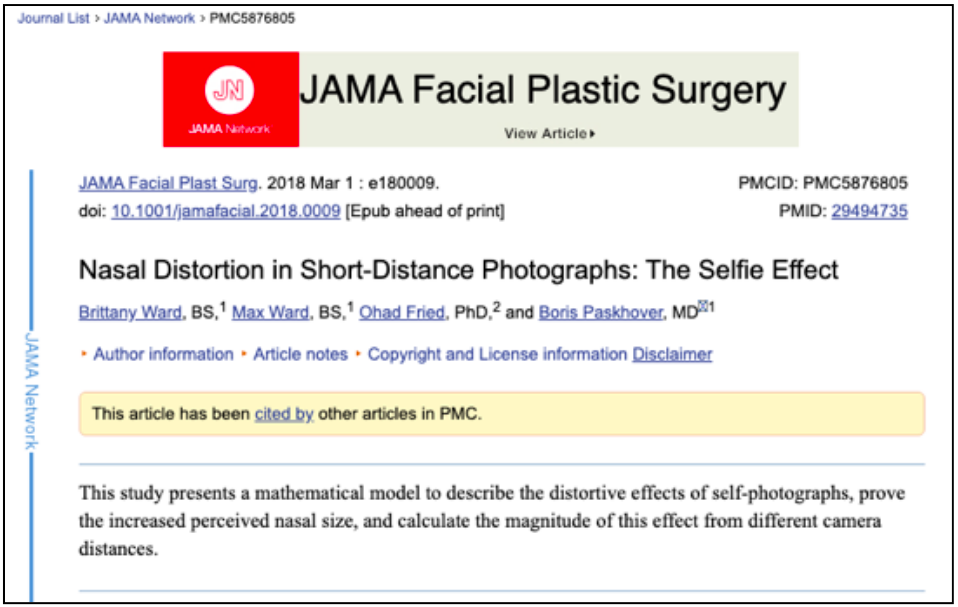 Object 3. A screenshot from an article in the online journal JAMA Facial Plastic Surgery |
My third object is an article about “the selfie effect” published in the journal JAMA Facial Plastic Surgery. This is a screenshot of the article on the journal’s website. This article argues that selfies distort the proportions of our face, making our nose appear 30 % larger than it really is. Note that the article is published in a journal about facial plastic surgery! The thing is, plastic surgeons have been reporting a sharp increase in the number of patients who want to go through nose reduction surgery because they don’t like the way they look in selfies. Most of these patients don’t realize that selfies distort their face. Psychologists have invented a term – snapchat dysmorphia (Ramphul & Mejias, 2018). Ward’s article which is the object of my exhibition was the first step towards understanding this condition.
This links to the IA prompt because photography is a material tool that we use in our everyday lives to understand how we look. Acquisition of knowledge in this case refers to my knowledge about my own body appearance, or my body image. Now that smartphones are ubiquitous and selfies are a trend, we may rely on selfies to acquire knowledge about our own appearance. We don’t realize that we are getting a distorted picture, and this results in biased perceptions.
I have included this object in the exhibition because, unlike the first two objects, it shows that the role of material tools in the acquisition of knowledge is not always positive. In fact, material tools can actually do harm and result in distorted knowledge, for which reason it is essential that we are aware of their limitations. This is probably true for the daily knowledge that we acquire in everyday personal lives, but this can also be taken as a lesson for bodies of knowledge that we share as communities.
Word count: 950 words
References:
- Greene, Brian (July 2013). How the Higgs Boson was found. Smithsonian Magazine. Retrieved from: https://www.smithsonianmag.com/science-nature/how-the-higgs-boson-was-found-4723520/
- Mann, Adam (2019, January 29). What is the Large Hadron Collider? LiveScience. Retrieved from: https://www.livescience.com/64623-large-hadron-collider.html
- Ramphul, K., & Mejias, S. G. (2018). Is “Snapchat Dysmorphia” a Real Issue?. Cureus, 10(3), e2263. https://doi.org/10.7759/cureus.2263

Alexey Popov is a teacher of IB Psychology and Theory of Knowledge. He is an IB author, examiner and workshop leader. He also authored Oxford IB Psychology books. He currently lives in Hong Kong.
